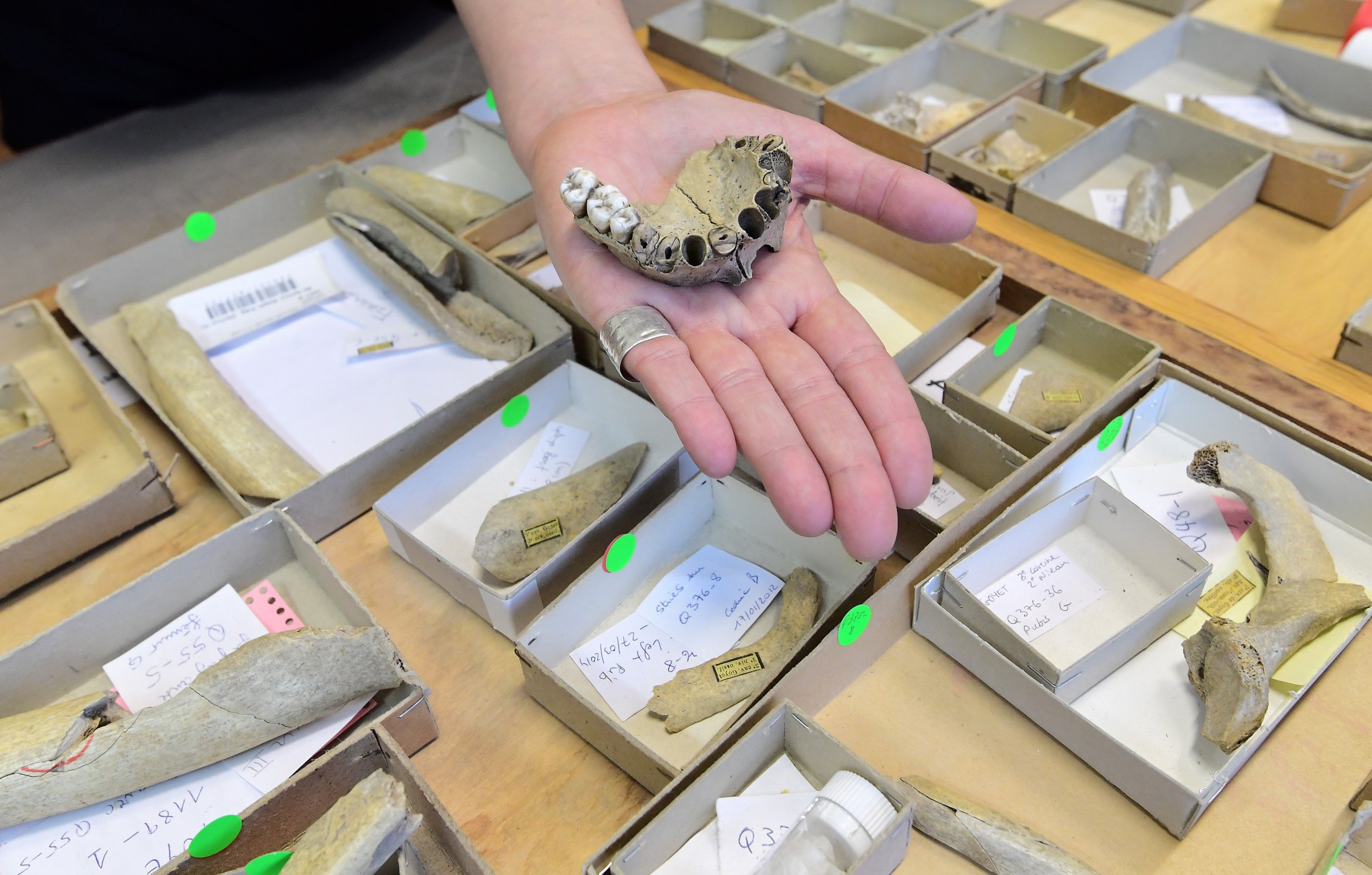
A team of scientists have drawn headlines over the past few years for a series of papers asserting that early humans made their way to northern Europe a million years ago. But now, other archaeologists are throwing doubt on that work. Those assertions, a new study says, might be based on misinterpreting bones that were stolen from archaeological digs and taken out of context.
They have laid out their concerns in a paper posted to the pre-print server biorxiv, and Nature News reports that the journals that published the original papers have announced investigations into their accuracy.
The authors of the new paper include the current head of excavations at Untermassfeld, a rich deposit of animal fossils that are about a million years old. They write that until they were able to instate appropriate security measures at the site, they had occasional problems with bones disappearing—and they believe that these lost bones became the basis for the controversial papers published in the past few years.
Those earlier papers argued that hominins had a solid foothold in relatively northern parts of Europe about a million years ago, whereas previous theories had suggested they only made it to southern Europe around that time and only for a brief period. The more recent papers had been based on bones discovered at Untermassfeld, a site in Germany.
Only animal bones have ever been found at the dig, although more than 14,000 of them to date. But the papers in question had argued a few of those bones had been marked with hammers and blades by early hominins. (Another paper now in doubt looked at stones found at the site.) The authors accessed those bones through what they referred to as the Schleusingen collection and attribute to a collector working in the late 1970s and early 1980s, rather than through the Untermassfeld dig directly.
The new paper isn't accusing the other research team of stealing the bones themselves, just of failing to ask enough questions about the materials and where they came from. Those scientists have already responded in defense of their work.
One of the bones they looked at appears to be part of a deer bone that was stolen from Untermassfeld in 2009 and sent to a German natural history museum in 2014. The Untermassfeld scientists argue that the marks the other researchers interpreted earlier as hominin-made were actually caused by other animals.
According to Nature News, the journals that published the original articles, Journal of Human Evolution and Quaternary International, have both published what's called expressions of concerns, flagging that there may be problems with the paper but not outright withdrawing the publications pending further discoveries.
Uncommon Knowledge
Newsweek is committed to challenging conventional wisdom and finding connections in the search for common ground.
Newsweek is committed to challenging conventional wisdom and finding connections in the search for common ground.
About the writer
Meghan Bartels is a science journalist based in New York City who covers the science happening on the surface of ... Read more
To read how Newsweek uses AI as a newsroom tool, Click here.






